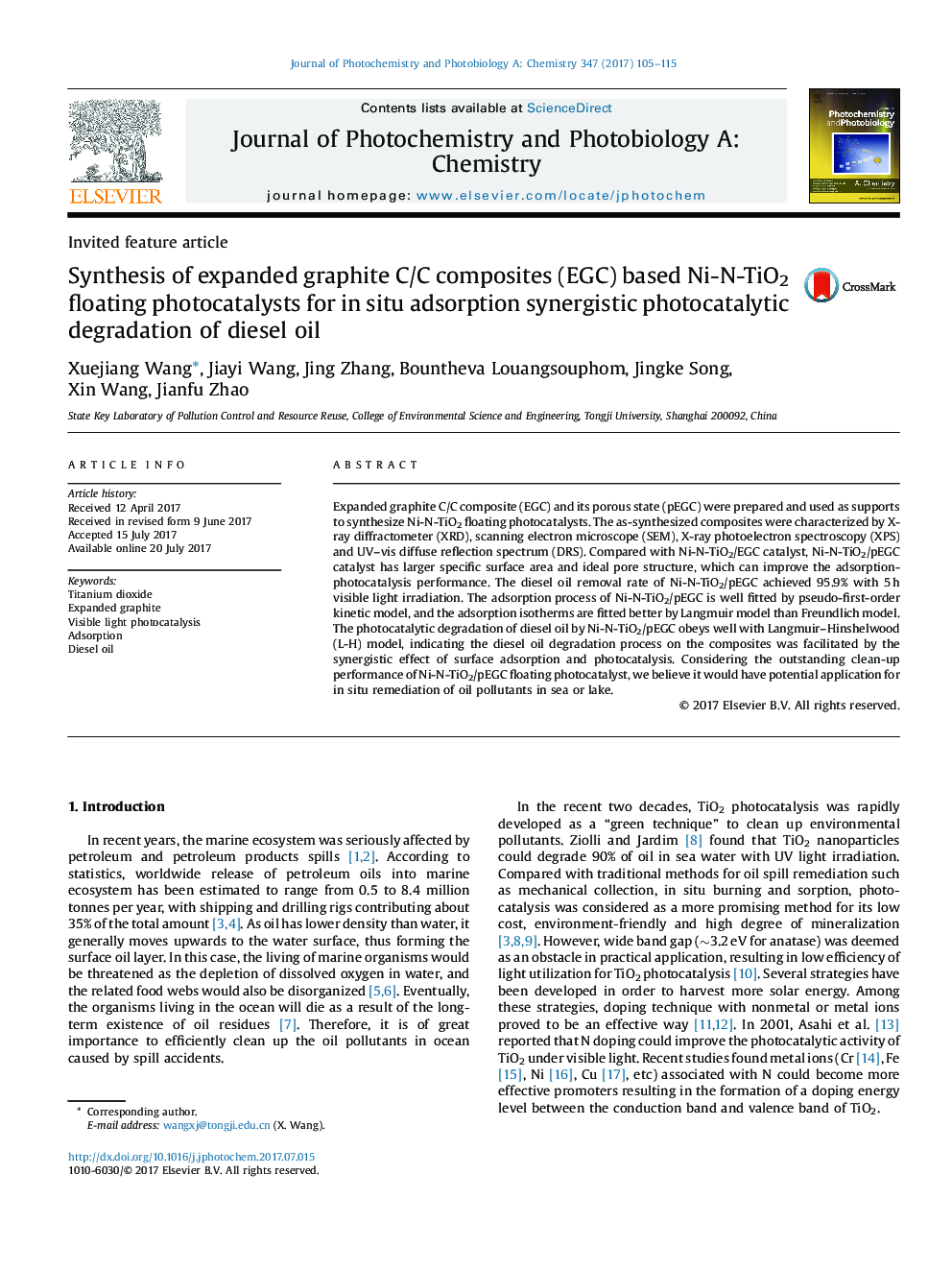| Article ID | Journal | Published Year | Pages | File Type |
|---|---|---|---|---|
| 4753873 | Journal of Photochemistry and Photobiology A: Chemistry | 2017 | 11 Pages |
â¢Ni-N-TiO2/pEGC photocatalysts were synthesized by a facile sol-gel method.â¢Ni-N-TiO2/pEGC possess large surface areas and ideal pore structures.â¢Ni-N-TiO2/pEGC exhibited enhanced activity on absorption and photocatalytic degradation of diesel oil.â¢The synergetic adsorption-photocatalytic mechanism of Ni-N-TiO2/pEGC was investigated.
Expanded graphite C/C composite (EGC) and its porous state (pEGC) were prepared and used as supports to synthesize Ni-N-TiO2 floating photocatalysts. The as-synthesized composites were characterized by X-ray diffractometer (XRD), scanning electron microscope (SEM), X-ray photoelectron spectroscopy (XPS) and UV-vis diffuse reflection spectrum (DRS). Compared with Ni-N-TiO2/EGC catalyst, Ni-N-TiO2/pEGC catalyst has larger specific surface area and ideal pore structure, which can improve the adsorption-photocatalysis performance. The diesel oil removal rate of Ni-N-TiO2/pEGC achieved 95.9% with 5Â h visible light irradiation. The adsorption process of Ni-N-TiO2/pEGC is well fitted by pseudo-first-order kinetic model, and the adsorption isotherms are fitted better by Langmuir model than Freundlich model. The photocatalytic degradation of diesel oil by Ni-N-TiO2/pEGC obeys well with Langmuir-Hinshelwood (L-H) model, indicating the diesel oil degradation process on the composites was facilitated by the synergistic effect of surface adsorption and photocatalysis. Considering the outstanding clean-up performance of Ni-N-TiO2/pEGC floating photocatalyst, we believe it would have potential application for in situ remediation of oil pollutants in sea or lake.
Graphical abstractDownload high-res image (106KB)Download full-size image
